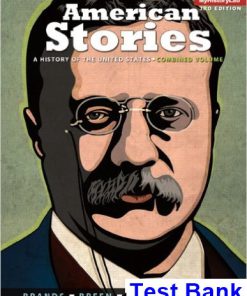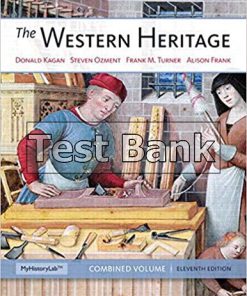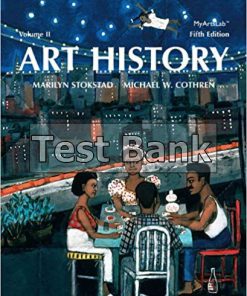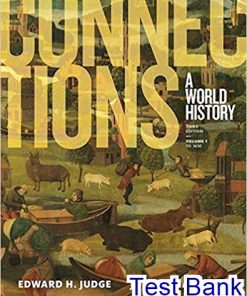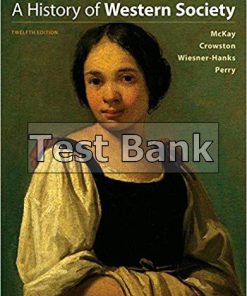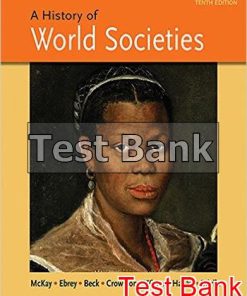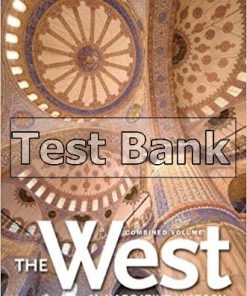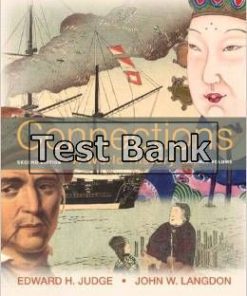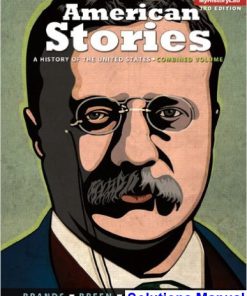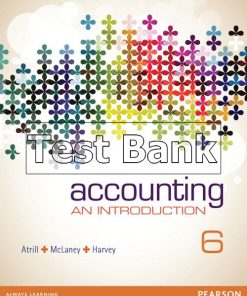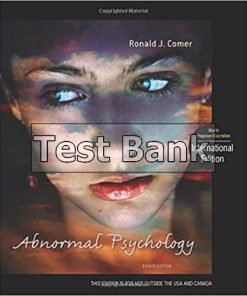Worlds History Combined Volume 5th Edition Spodek Test Bank
$50.00 Original price was: $50.00.$26.50Current price is: $26.50.
Worlds History Combined Volume 5th Edition Spodek Test Bank.
Worlds History Combined Volume 5th Edition Spodek Test Bank

Product details:
- ISBN-10 : 0205996124
- ISBN-13 : 978-0205996124
- Author: Howard Spodek
The World’s History encourages readers to explore the history of the world and the significance of this unique study. The past is not simply a list of events, rather the records of historic interpretations of those events. Because interpretations differ from historian to historian, the study of history becomes a pool of various narrations told from different perspectives. The World’s History celebrates these differentiating values offering readers a rich, comprehensive, and challenging introduction to the study of world history and the methods and key interpretations of its historians.
This title links chronology, themes, and geography in eight units, or parts of study. The parts move progressively along a timeline from emergence of early humans to the present day encouraging students to analyze historical events and develop a grasp of the chronology of human development. Readers will gain an appreciation of the national and cultural origins of all their diverse fellow citizens.
Table contents:
PART ONE – TURNING POINT: HUMAN ORIGINS
Chapter 1:. The Dry Bones Speak
PART TWO – TURNING POINT: SETTLEMENT PATTERNS
Chapter 2: From Village Community to City-state
Chapter 3: River Valley Civilization
Chapter 4: A Polycentric World
PART THREE- TURNING POINT: FROM CITY-STATES TO EMPIRES
Chapter 5: Dawn of the Empires
Chapter 6: Rome and the Barbarians
Chapter 7: China
Chapter 8: Indian Empires
PART FOUR – TURNING POINT: CREATING WORLD RELIGIONS
Chapter 9: Hinduism and Buddhism
Chapter 10: Judaism and Christianity
Chapter 11: Islam
PART FIVE – TURNING POINT: TRADE
Chapter 12: Establishing World Trade Routes
Chapter 13: The Opening of the Atlantic and the Pacific
Chapter 14: The Unification of World Trade
Chapter 15: Migration
PART SIX – TURNING POINT: REVOLUTION
Chapter 16. Political Revolutions in Europe and the Americas
Chapter 17. The Industrial Revolution
Chapter 18. Nationalism, Imperialism, and Resistance
PART SEVEN – TURNING POINT: EXPLODING TECHNOLOGIES
Chapter nineteen Methods of Mass Production and Destruction
Chapter twenty World War II
Chapter twenty-one Cold War, New Nations, and Revolt Against Authority
Chapter twenty-two China and India
PART EIGHT- TURNING POINT: FROM PAST TO PRESENT TO FUTURE
Chapter 23: Contemporary History
Chapter 24: Contemporary History
II) Detailed Table of Contents
PART ONE – TURNING POINT: HUMAN ORIGINS
To 10,000 b.c.e. Humankind Begins
Chapter 1:. The Dry Bones Speak
To 10,000 B.C.E.
PART TWO – TURNING POINT: SETTLEMENT PATTERNS
10,000 B.C.E -1,000 C.E. Settling Down: Villages and Cities
Chapter 2: From Village Community to City-state
Food First: The Agricultural Village 10,000-B.C.E-750 B.C.E
Chapter 3: River Valley Civilization
The Nile and the Indus7000 B.C.E.–750 B.C.E.
Chapter 4: A Polycentric World
Cities and States in East Asia, the Americas, and West Africa 1700 b.c.e.–1000 c.e.
PART THREE- TURNING POINT: FROM CITY-STATES TO EMPIRES
2000 B.C.E –1100 C.E. What are Empires and Why Are They Important?
Chapter 5: Dawn of the Empires
Empire-building in North Africa, West Asia, and the
Mediterranean 2000 B.C.E.–300 B.C.E.
Chapter 6: Rome and the Barbarians
The Rise and Dismemberment of Empire 753 b.c.e.–1453 C.E.
Chapter 7: China
Fracture and Unification: The Qin, Han, Sui, and Tang Dynasties 221 B.C.E.–900 C.E.
Chapter 8: Indian Empires
Cultural Cohesion in a Divided Subcontinent 1500 B.C.E.–1100 C.E.
PART FOUR – TURNING POINT: CREATING WORLD RELIGIONS
2500 B.C.E.–1500 C.E. Religion: Ancient Roots
Chapter 9: Hinduism and Buddhism
The Sacred Subcontinent: The Spread of Religion in India and Beyond 1500 B.C.E.–1200 C.E.
Chapter 10: Judaism and Christianity
Peoples of the Bible: God’s Evolution in West Asia and Europe 1700 B.C.E.–1000 C.E.
Chapter 11: Islam
Submission to Allah: Muslim Civilization Bridges the World 570 C.E.–1500 C.E.
PART FIVE – TURNING POINT: TRADE
1300–1700 Trade Routes Connect the Continents
Chapter 12: Establishing World Trade Routes
The Geography and Philosophies of Early Economic Systems 1300–1500
Chapter 13: The Opening of the Atlantic and the Pacific
Economic Growth, Religion and Renaissance, Global Connections 1300–1500
Chapter 14: The Unification of World Trade
New Philosophies for New Trade Patterns 1500–1776
Chapter 15: Migration
Demographic Changes in a New Global World 1300–1750
PART SIX – TURNING POINT: REVOLUTION
1640–1914 Coping with Western Revolutions
Chapter 16. Political Revolutions in Europe and the Americas
The Birth of Political Rights in the Age of Enlightenment 1649–1830
Chapter 17. The Industrial Revolution
A Global Process 1700–1914
Chapter 18. Nationalism, Imperialism, and Resistance
Competition among Industrial Powers 1650–1914
PART SEVEN – TURNING POINT: EXPLODING TECHNOLOGIES
1914–1991 For Death and Life
Chapter nineteen Methods of Mass Production and Destruction
Technological Systems 1914–1937
Chapter twenty World War II
To Hell and Back 1937–1949
Chapter twenty-one Cold War, New Nations, and Revolt Against Authority
Remaking the World After the War 1945–1991
Chapter twenty-two China and India
Into the Twenty-First Century
PART EIGHT- TURNING POINT: FROM PAST TO PRESENT TO FUTURE
1979-
Chapter 23: Contemporary History
Evolution, Settlements, Politics, and Religion
Chapter 24: Contemporary History
Trade, Revolution, Technology, Identity
People also search:
combined volume 5th grade
world history 5th grade
world history textbook 5th grade
world history unit 5 common assessment
a history of world societies combined volume 11th edition pdf
a history of world societies combined volume
Instant download after Payment is complete
You may also like…
Humanities and Social Sciences
American Stories A History of the United States Combined Volume 1 and 2 1st Edition Brands Test Bank
Solutions Manual
Humanities and Social Sciences




